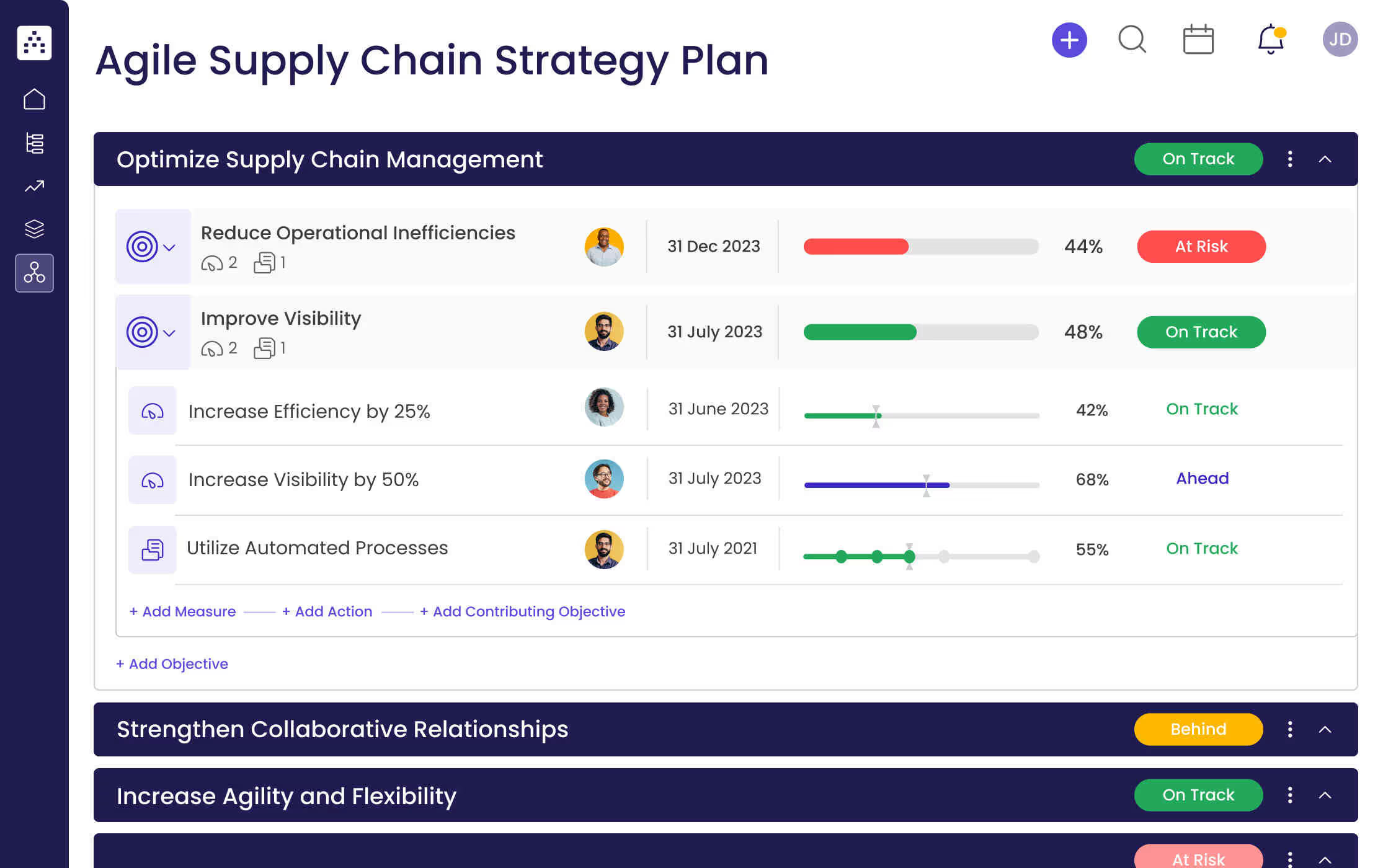What is an Agile Supply Chain Strategy?
An agile supply chain strategy is a set of actions developed to increase the speed and flexibility of a company's supply chain in order to quickly respond to market changes and disruptions. It is designed to help organizations optimize their supply chain management strategies and maximize their financial returns. This involves identifying areas of potential improvement, setting measurable objectives, and implementing projects to achieve those objectives.
What's included in this Agile Supply Chain Strategy template?
- 3 focus areas
- 6 objectives
- 6 projects
- 6 KPIs
Each focus area has its own objectives, projects, and KPIs to ensure that the strategy is comprehensive and effective.
Who is the Agile Supply Chain Strategy template for?
The agile supply chain strategy template is designed for organizations to outline strategies for agile supply chain management. This template provides a framework to structure and optimize your supply chain management, helping you to create actionable objectives and strategies that are tailored to your business needs.
1. Define clear examples of your focus areas
A focus area is a broad area of improvement that you want to address within your supply chain management strategy. Examples of focus areas may include optimizing supply chain management, strengthening collaborative relationships, or increasing agility and flexibility. Each focus area should be clearly defined, with measurable objectives and related projects that are tailored to the specific needs of your business.
2. Think about the objectives that could fall under that focus area
Objectives are the specific goals that you want to achieve within each focus area. Objectives should be measurable, with relevant actionable projects that can help you to reach them. For example, under an Optimize Supply Chain Management focus area, objectives could include reducing operational inefficiencies, improving visibility, and increasing efficiency.
3. Set measurable targets (KPIs) to tackle the objective
KPIs are measurable targets that help you track progress towards your objectives. KPIs should be selected based on the objectives you have established for each focus area. For example, for an objective to reduce operational inefficiencies, you might set a KPI to increase efficiency by 25%. This KPI would provide a measurable target that you can use to track progress and measure success.
4. Implement related projects to achieve the KPIs
Projects are actionable initiatives designed to help you reach your KPIs. Each project should be tailored to the specific needs of your business and should be closely monitored to ensure that it is helping you to reach your objectives. For example, for an objective to improve visibility, you might implement a real-time tracking system.
5. Utilize Cascade Strategy Execution Platform to see faster results from your strategy
Cascade Strategy Execution Platform is an innovative tool designed to help businesses achieve their objectives faster and more efficiently. It provides a comprehensive suite of tools to help you track progress, measure results, and optimize your strategy. With Cascade, you can quickly and easily see the results of your strategy, helping you to make faster, more informed decisions.


